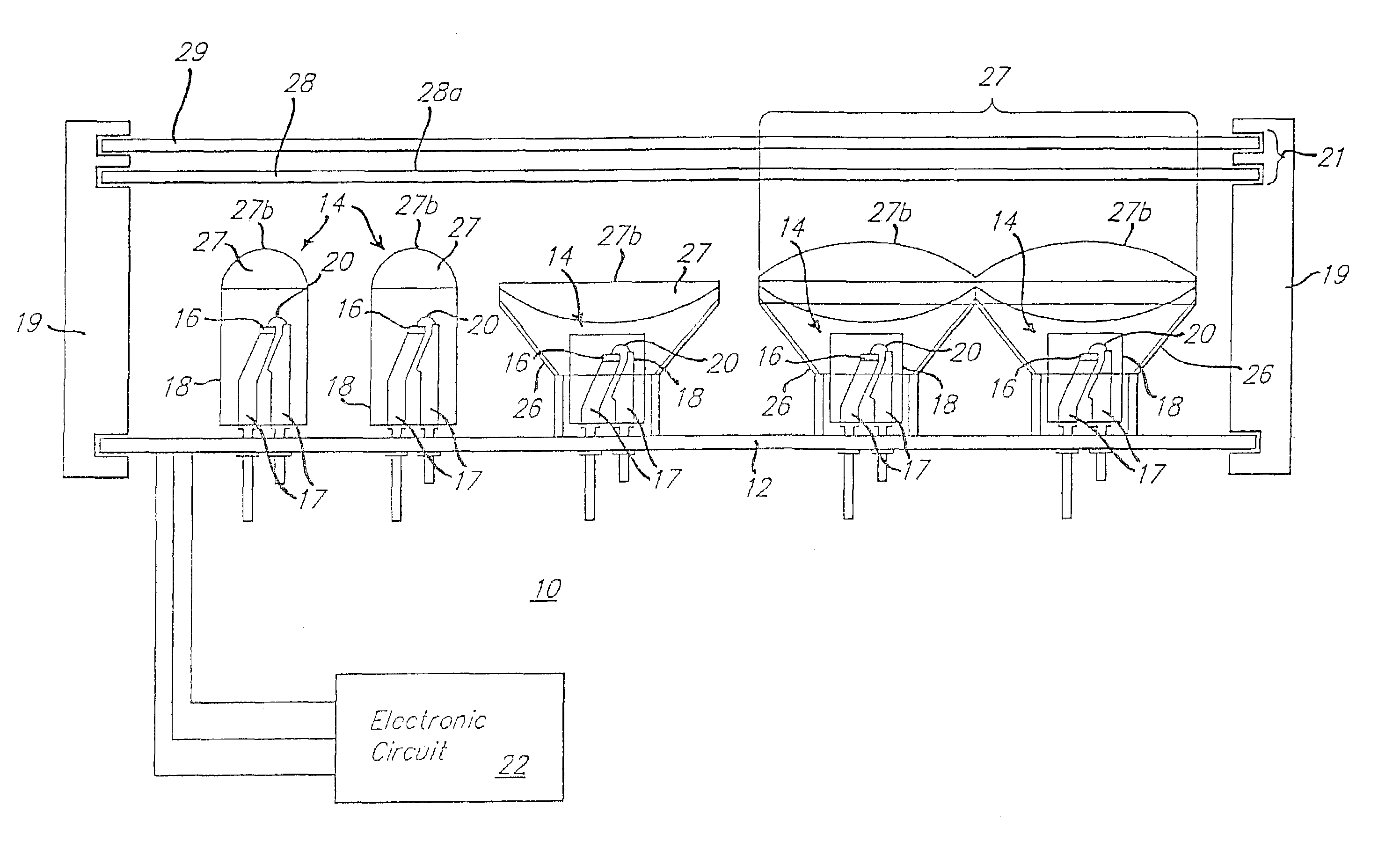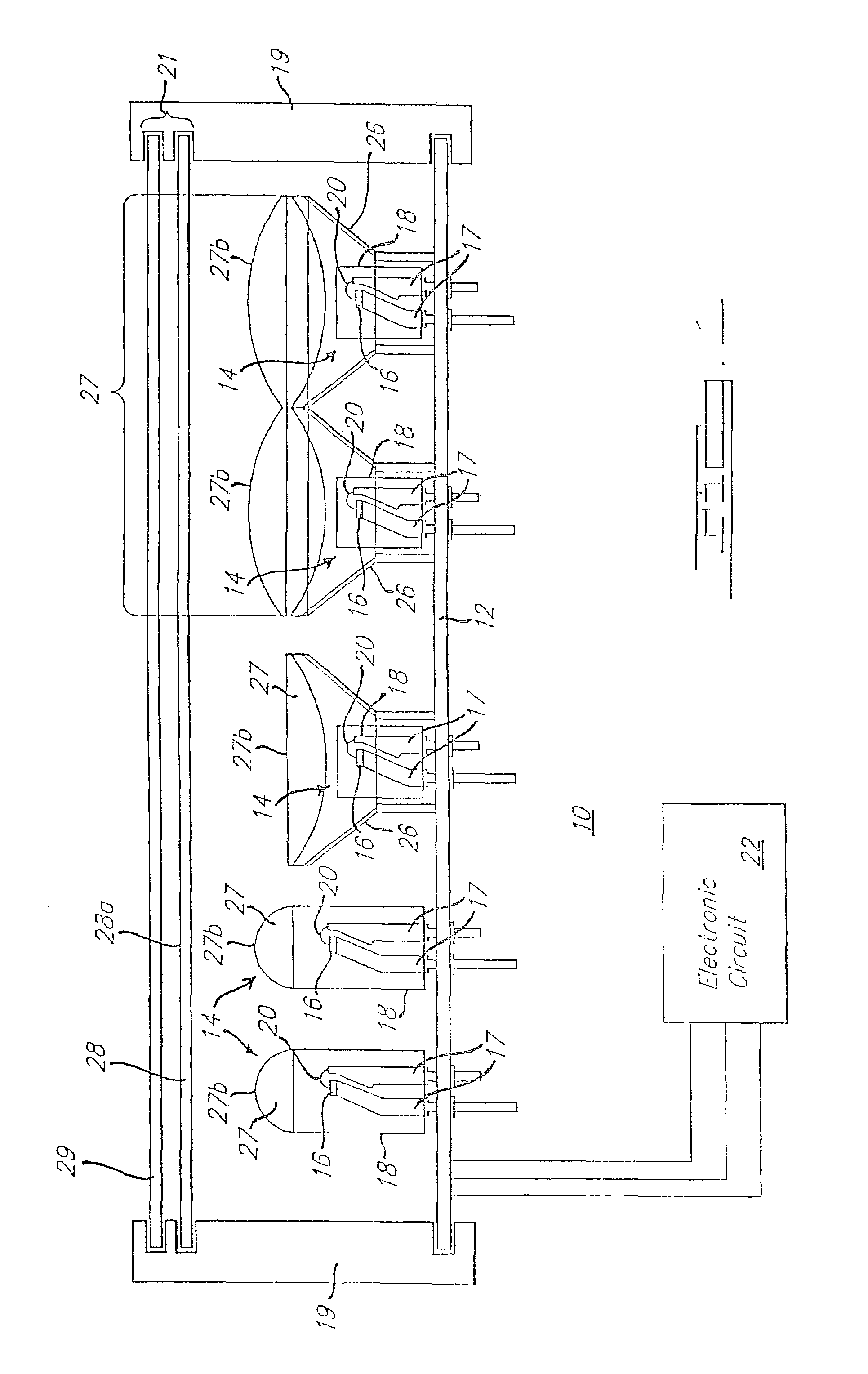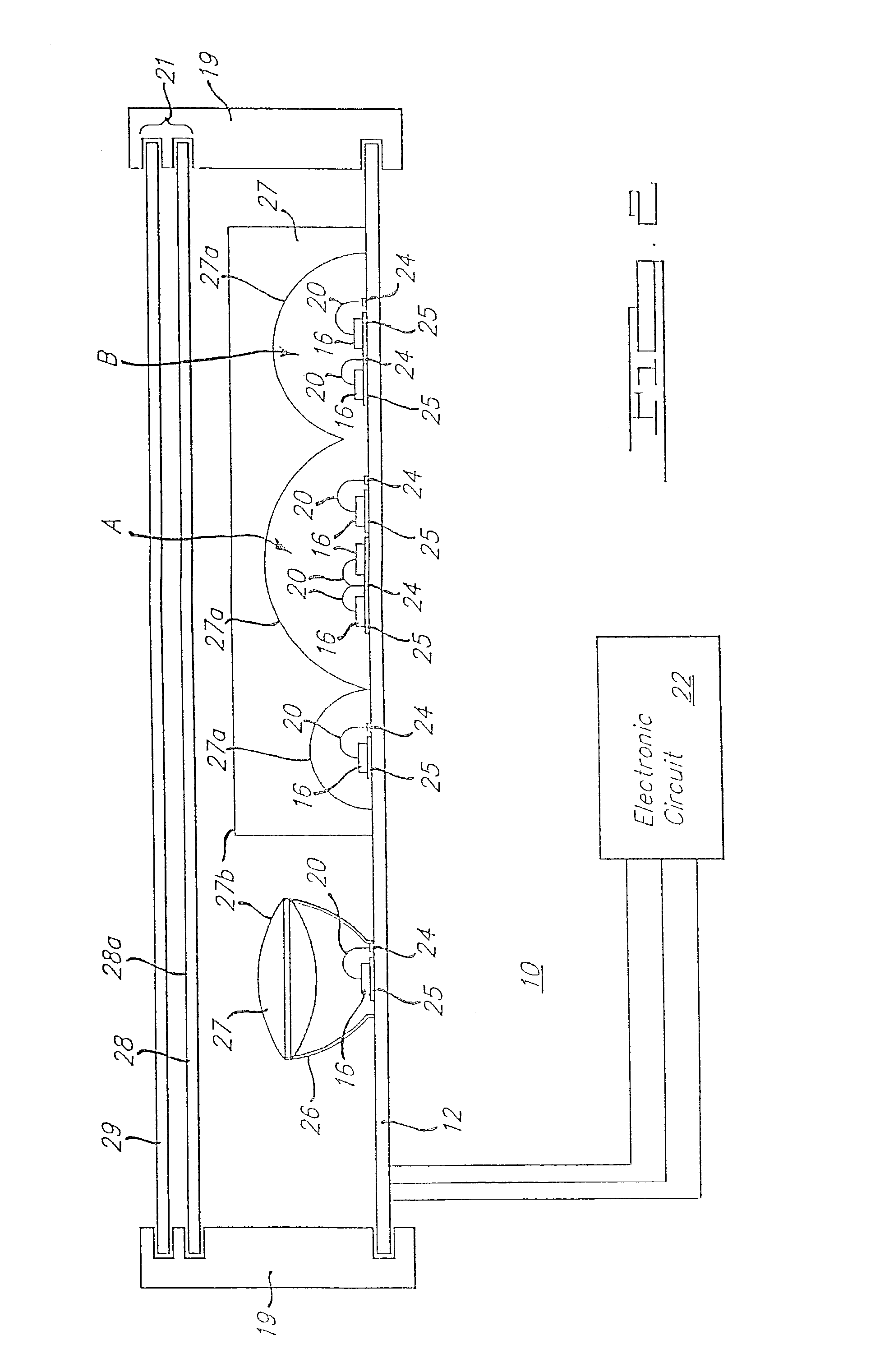A deeply yellow
colored illuminator would make this distinction virtually impossible.
On an aeronautical chart, white-light illuminators make it possible to discern the difference between the characteristic blue markings for certain types of
controlled airspace and the green pattern of underlying
terrain, whereas a deeply red
colored illuminator would make this distinction virtually impossible.
Furthermore, these issues of
color discrimination and contrast go beyond the simple need for accurate identification.
There are limits to the adaptability of human
color vision, however, and
color constancy does not hold if highly chromatic illuminators are used or if the white illumination observed in a setting is altered by a strongly
colored filter.
If these glasses are red, for instance, then it will be nearly impossible to discern a line of red ink on white paper, even though the line would stand out quite plainly in normal room illumination if the glasses are removed.
This type of lamp emits a highly saturated yellow light which makes detection and or identification of certain objects or printed images very difficult if not impossible, and, consequently their commercial use has been very limited.
As will be discussed later, a similar problem arises from prior-art attempts to use
high intensity red or amber light emitting diodes (LEDs) as illuminators since they, like the low-pressure
sodium lamp, emit narrow-band
radiation without regard for rendering quality.
Of course, traditional white-light sources, which generate light directly by fuel
combustion, are no longer suitable for most vehicular,
watercraft, aircraft, and portable and certain other applications where an open
flame is unsafe or undesirable.
Furthermore, many modern
electric light sources are relatively inefficient, e.g., conventional
tungsten incandescent lamps, or require high voltages to operate, e.g., fluorescent and gas
discharge lamps, and therefore are not optimal for vehicular, portable, and other unique illuminators used where only limited power is available, only
low voltage is available, or where
high voltage is unacceptable for safety reasons.
Because no viable alternatives have been available, however, illuminators for these overland vehicles,
watercraft, aircraft, and the other fields mentioned have used low-
voltage incandescent white-light illuminators for quite some time to assist their operators, occupants, or other observers in
low light level situations.
Incandescent lamps are fragile and have a
short life even in stable environments, and consequently must be replaced frequently at great inconvenience,
hazard, and / or expense.
This need for replacement has complicated designs for all manners of illuminators, but especially for vehicles.
In addition to their inherently
short life, incandescent lamps are very susceptible to damage from mechanical shock and vibration.
Automobiles experience severe shocks and significant vibration during driving conditions which can cause damage to incandescent lamps, particularly the filaments from which their light emissions originate.
This is an especially severe problem for lamps mounted on or near the engine hood,
trunk lid, passenger
doors, exterior mirrors, and rear hatch or gate, all of which periodically generate tremendous shocks upon closing.
Incandescent lamps can also be easily destroyed by
exposure to liquid
moisture due to the thermo-mechanical stress associated with contact between the hot glass
bulb wall and the room-temperature fluid.
Incandescent lamps are also easily damaged by flying stones and the like.
Thus, it is very difficult to incorporate an incandescent light on an exterior mirror without going to extreme measures to protect the light
bulb from shock, vibration,
moisture and flying objects while still allowing for removal of the
light fixture when it either burns out or is otherwise permanently damaged.
Incandescent lights also exhibit certain electrical characteristics which make them inherently difficult to incorporate in vehicles, such as an automobile.
In addition, the
voltage-current (V-I) characteristic of incandescent lamps is notoriously non-linear, as are each of the relationships between light output and
voltage, current, or power.
This sensitivity to power source variation makes electronic control of incandescent lamps a particularly difficult problem.
They are further susceptible to significant reliability and
field service life degradation when subjected continuously to DC electrical power, pulse-width modulated DC power, simple on / off switching of any sort, or any over-voltage conditions, however minor.
Incandescent lamps also possess significant
inductance which, when combined with their relatively
high current load, complicates electronic switching and control greatly due to inductive resonant voltage transients.
Incandescent lamps also suffer from poor efficiency in converting electrical power into radiated visible
white light.
This has severe negative consequences for vehicular,
aerospace,
watercraft, and portable illuminator applications where the amount of power available for lighting systems is limited.
Because these mechanisms for restoring
battery charge are inherently bulky, heavy, and / or expensive, it is severely detrimental for an illuminator to possess poor power-conversion efficiency in generating visible light.
Another result of poor efficiency associated with incandescent lamps is that they generate large amounts of heat for an equivalent amount of generated light as compared to other sources.
This results in very high
bulb-wall temperatures typically in excess of 250 degrees C. and large heat accumulations which must be dissipated properly by
radiation,
convection, or conduction to prevent damage or destruction to the illuminator support members,
enclosure,
optics or to other nearby vehicle components.
Design efforts to dissipate the heat while retaining optical effectiveness further add requirements for space and weight to the illuminator
assembly, a severe
disadvantage for vehicular, watercraft, aircraft, and portable applications which are inherently sensitive to weight and
space requirements.
The output of sources using these phenomena can be tailored to meet the requirements of specific systems; however, they have had limited use in vehicular, watercraft, aircraft or portable illuminators because of a combination of low intensity, poor efficiency,
high voltage requirements, limited environmental resilience,
high weight, complexity, high cost, poor reliability, or short service life.
Unfortunately, while these types of displays may exhibit appreciable
surface brightness, they are extremely bulky, expensive and complicated and do not project suitable amounts of illumination at a distance to be of use as effective illuminators.
The illumination level associated with this dim glow is barely sufficient for reading a newspaper and is completely inadequate to identify objects or colors in a detailed photograph.
However, such a
system is rather complicated, and Schoniger et al. does not mention the inherent susceptibility of an R-G-B
system to unacceptable variation due to significant variations in luminous output produced from one LED to another of the same type.
Such LED variations cause errors in the relative proportions of the actual color mixture produced versus that desired and, coupled with
high complexity and cost, render the
system undesirable for most practical uses.
 Login to View More
Login to View More  Login to View More
Login to View More 


